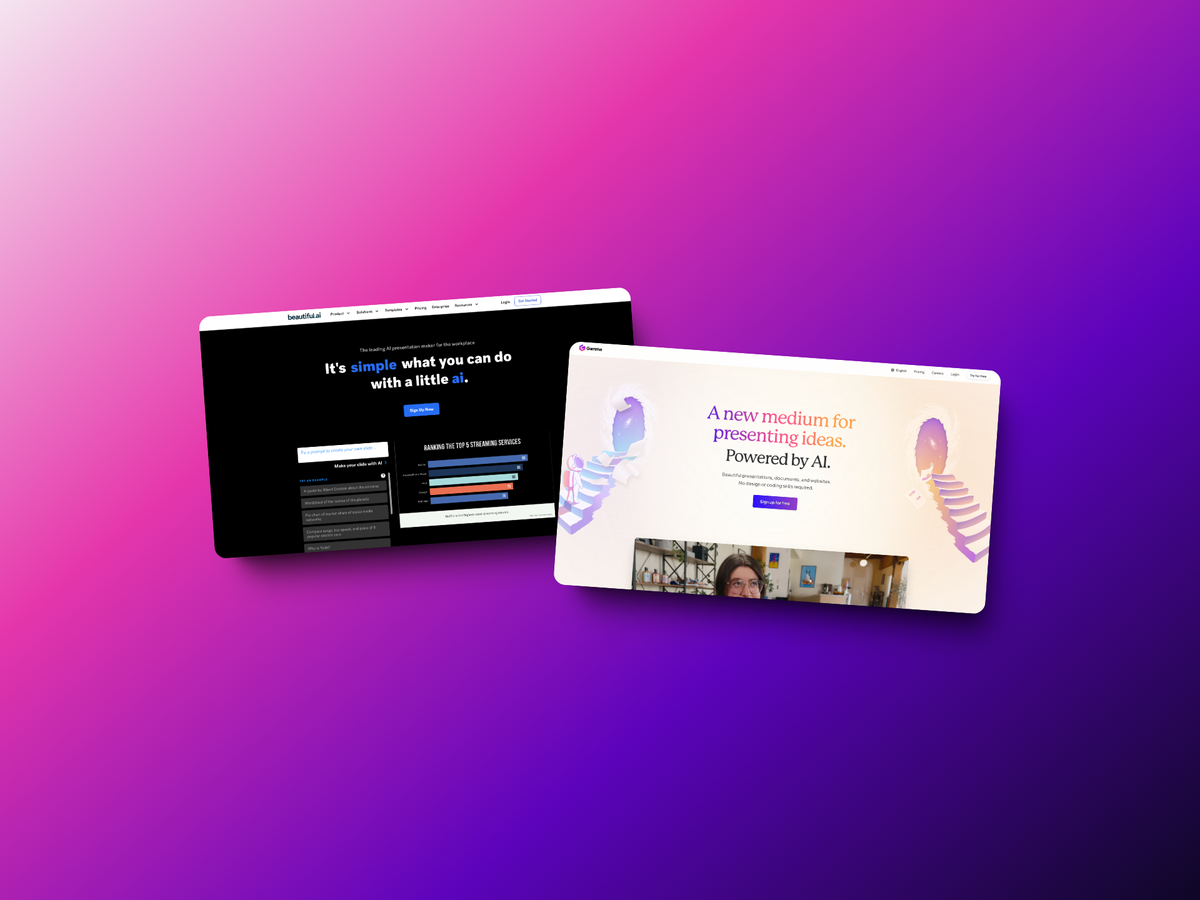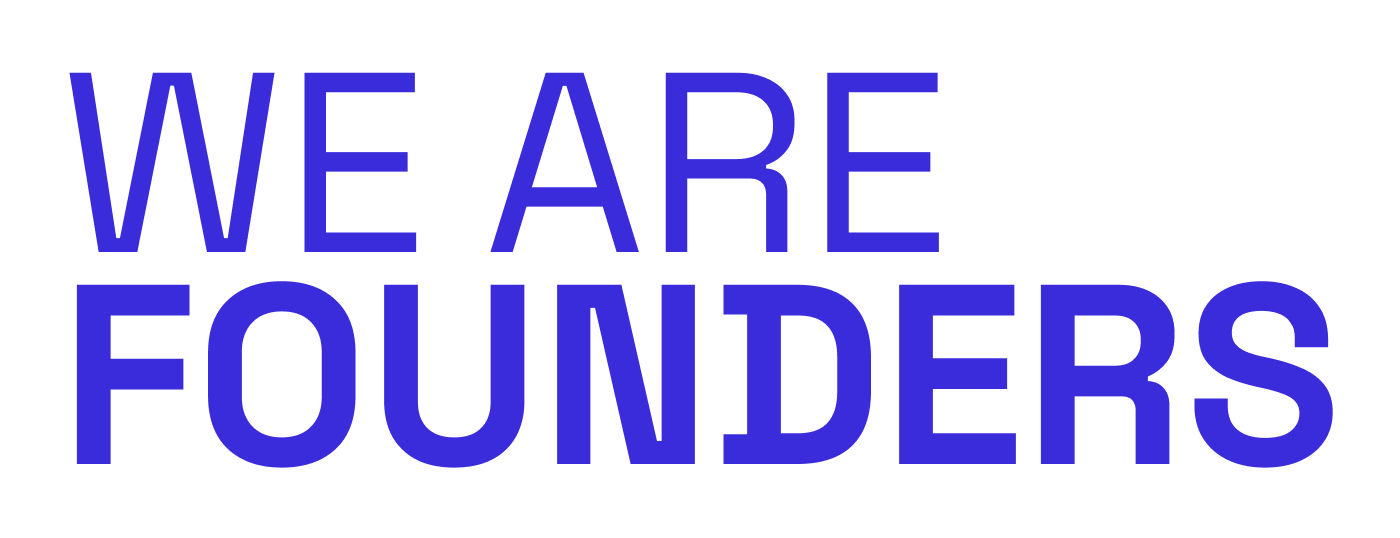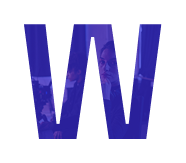The Setup: A Pitch That Made VCs Laugh
Grant Lee and his co-founders walked into investor meetings with what they called "the dumbest idea they'd ever heard." Another presentation tool? In a world dominated by PowerPoint and Google Slides?
Most VCs passed. Some laughed. The presentation software market wasn't just crowded - it was ancient.
PowerPoint launched in 1987. Google Slides had been free for years. Canva was already a billion-dollar darling. What could possibly be left to build?
Today, Gamma is valued at $2 billion with 70 million users and - here's the kicker - it's actually profitable.
This is the story of how three founders turned conventional wisdom upside down and built one of the fastest-growing SaaS companies by solving a problem everyone thought was already solved.
What Problem Are They Actually Solving?
Think of it as the anti-PowerPoint. No blank slides staring at you. No wrestling with alignment tools. No spending three hours picking fonts while your actual content sits neglected.
You start with your ideas - just text, bullet points, rough thoughts. Gamma's AI transforms that into a polished, designed presentation. Then you can tweak, refine, and share.
Gamma was recently featured on Lenny's Podcast.
The core insight: People don't want to make slides. They want to share ideas. Everything else is friction.
"We're not competing with PowerPoint. We're competing with the blank page."
The product works for pitch decks, class presentations, internal reports, portfolios, landing pages - anywhere you need to communicate visually without becoming a designer first.
The Revenue Reality: $100M ARR With 50 People
| Metric | Result |
|---|---|
| Valuation | $2B |
| Users | 70M |
| Profitability | ✓ Yes (rare for SaaS) |
| Time to Scale | ~3 years |
| Market | "Saturated" presentation space |
| ARR | Estimated $100M+ |
| Employee Count | ~50 (lean team) |
That last one is wild. They're doing $100M+ ARR with roughly 50 people. Most SaaS companies that size have 200+ employees. Gamma's revenue per employee ratio is off the charts.
This isn't just impressive - it's a masterclass in capital efficiency. Every dollar invested generates outsized returns. Every hire is intentional. This is how you build a real business, not just chase vanity metrics.
Before the Billions: Why Three Founders Bet Against Convention
Grant Lee and his co-founders (Jon Noronha and James Fox) weren't outsiders taking a random shot. They knew the space intimately.
They'd spent years watching people struggle with presentation tools, fighting with templates, and producing mediocre results despite spending hours on design.
The traditional tools had a fundamental problem: they were built for designers, but used by everyone. PowerPoint gives you infinite control - and infinite ways to make something ugly.
Google Slides simplified things but didn't solve the core problem. Canva added templates but still required design thinking.
The "dumb" insight: What if the tool just handled the design automatically? What if you could focus purely on content and let AI handle the rest?
When they started pitching this in 2020-2021, investors pushed back hard:
- "The market is saturated"
- "Microsoft and Google own this space"
- "Canva already has this figured out"
- "People are used to PowerPoint—they won't switch"
Every objection sounded reasonable. Every objection was wrong.
How They Actually Got to $100M ARR
Move #1: They Picked Problems, Not Markets
Presentations aren't sexy. They're not Web3 or AI agents or autonomous vehicles. They're just... work. The kind of work that billions of people do every week.
That's exactly why it worked. The TAM (total addressable market) was enormous. Every student, every professional, every entrepreneur makes presentations. But because it seemed solved, competition was complacent.
The lesson: Sometimes the best opportunities are hiding in markets everyone is ignoring because they seem "done." Boring can be beautiful if it's big enough.
Move #2: They Built on AI Before AI Was Cool
Timing matters. Gamma didn't just add AI features to an existing product - they built the entire product around generative AI from day one.
When ChatGPT exploded in late 2022, suddenly everyone understood what "AI-powered" meant. Gamma was already there, with a product that demonstrated AI's practical value in a way everyone could understand.
While competitors scrambled to add "AI features," Gamma's entire value proposition was AI.
That's a massive competitive advantage.
Move #3: They Engineered a Viral Loop That Scales Itself
70 million users didn't come from aggressive sales teams or enterprise contracts. They came from a product so smooth that people naturally upgraded.
Their freemium strategy:
- Free tier is genuinely useful (not a demo)
- Paid tier adds real value (not just removing annoyances)
- Every presentation shared is a mini-billboard for Gamma
- Users can start creating immediately—no tutorial required
The viral loop is elegant: you create a presentation, share it with colleagues or on social media, they see it was made with Gamma, they want to try it. Rinse, repeat, scale.
This is CAC (customer acquisition cost) approaching zero. When your product markets itself, every dollar saved on acquisition drops straight to the bottom line.
Move #4: They Chose Profit Over Hypergrowth
Here's where Gamma gets really interesting. While other startups were lighting money on fire chasing growth, Gamma focused on unit economics from early on.
Why profitability became their moat:
- You control your destiny (less dependent on fundraising cycles)
- You can weather downturns (see: 2023-2024 tech correction)
- You can make long-term bets (not optimizing for next quarter's metrics)
- You're actually building a business (not just a valuation)
In 2024, when VC funding dried up and startups started collapsing, Gamma kept growing. Profitability is the ultimate moat.

The Contrarian Playbook: Four Bets That Shouldn't Have Worked
Bet #1: Attack a "Dead" Market and Win Anyway
Everyone said the presentation market was done. Microsoft had 95%+ market share in the 90s. Google offered a free alternative. Canva had design covered.
But "saturated" usually means "everyone is doing the same thing." Gamma found white space not by adding features, but by removing friction.
The reframe: Don't ask "is this market crowded?" Ask "is this market serving users well?" If incumbents are complacent, there's always an opening.
Bet #2: Make AI Your Foundation, Not Your Feature
Most companies in 2023-2024 slapped AI features onto existing products. "Now with AI!" became the laziest marketing line in tech.
Gamma did the opposite. They asked: "If we could rebuild presentations from scratch with AI, what would that look like?" The answer was a fundamentally different product.
This is the difference between adding a chatbot to your app and building ChatGPT. One is incremental. The other is revolutionary.
Bet #3: Cut Features to Grow Faster
PowerPoint has thousands of features. Most users touch about 10% of them. Gamma launched with a fraction of PowerPoint's functionality—and that was the point.
They optimized for the 90% use case: someone needs to share ideas visually, quickly, without becoming a designer. They ignored power users initially. That focus made the product incredibly sharp.
The counterintuitive truth: Less features = faster shipping = more learning = better product-market fit.
Bet #4: Let the Product Sell Itself (No Sales Team Required)
No enterprise sales team. No outbound campaigns. No cold calls. Just a product so good that people tell their friends.
For a $2B company, that's almost unheard of. But it works when your product has a built-in referral mechanism (shared presentations) and a painless signup flow.
The math: If your CAC is near zero and your LTV (lifetime value) is strong, you print money. That's the game Gamma is playing.
Your Playbook: How to Find Your Own $100M Opportunity
Strategy #1: Find Friction Everyone Tolerates
Grant and team were tired of making decks. So are millions of others. They weren't solving a theoretical problem—they were scratching their own itch.
Your move: What frustrates you every week? What tool do you use that makes you think "there has to be a better way"? That frustration might be shared by more people than you think.
Make a list. What do you complain about? What takes too long? What feels unnecessarily complicated? Somewhere in that list is a business.
Strategy #2: Ignore "Saturated Market" Advice
They're just markets where everyone is copying each other. The presentation space looked saturated because everyone was building variations of the same thing.
Your move: Look at markets where innovation has stalled. Where are users complaining? Where has the product experience barely changed in a decade? That's opportunity.
Boring, established markets are goldmines if you can find a new angle. Don't chase the hot new thing—chase the old thing that everyone hates.
Strategy #3: Build Distribution Into Your Product DNA
Gamma's viral loop is absurdly simple: every presentation shared is an ad for Gamma. The product markets itself.
Your move: Can you build sharing into your product's core functionality? Can using your product naturally expose it to other potential users? If not, you'll need to pay for every customer.
Ask yourself: does using my product create an artifact that others see? Does it require collaboration? Does it produce something share-worthy? If yes, you have built-in distribution.
Strategy #4: Use AI to Build Something Impossible Without It
Don't bolt AI onto your product. Build your product around what AI makes possible. There's a massive difference.
Gamma couldn't exist without AI. Remove the AI, and you're left with nothing. That's good—it means they're building something genuinely new, not just adding buzzwords.
Your move: If you removed AI from your product idea, would it still work? If yes, you might be using AI wrong. The best AI products are impossible without it.
Strategy #5: Perfect the Core, Ignore the Edge Cases
Power users will always want more features. But they're not your market initially. The masses want something that just works.
Gamma couldn't do everything PowerPoint could. They were fine with that. They focused on nailing the core use case, which let them ship faster and iterate quicker.
Your move: What's the 90% use case for your product? Can you make that experience perfect, even if it means saying no to edge cases?
Ship a 10/10 experience for 90% of users instead of a 7/10 experience for 100% of users. You can always expand later.
What "Overnight Success" Actually Looks Like
This isn't a "build it and they will come" story. That's not how it works.
Reality checks:
- Gamma spent years perfecting the product before scale hit
- They likely had dozens of failed experiments we never hear about
- They had to educate users on a new way of working
- They competed against free alternatives (Google Slides)
- They needed to nail performance (AI can be slow)
70 million users came from obsessive iteration, not luck. From A/B testing onboarding flows. From fixing bugs at 2am. From reading support tickets and actually changing the product based on feedback.
The overnight success was years in the making.
The Threats Nobody's Talking About
At $2B and 70M users, Gamma faces new challenges:
The competition is coming. Microsoft, Google, and Canva now see what Gamma built. They have more resources. They'll copy features.
The market is evolving. AI is moving fast. What's cutting-edge today is table stakes tomorrow.
Profitability is great, but growth is expected. Investors will want to see continued expansion. Can they maintain momentum?
But here's why they might win: they have the culture, the focus, and the lead. They're not a feature team inside a giant company—they're a product company with AI in their DNA.
Your Move: Stop Waiting for Permission
The best opportunities often look like bad ideas at first. That's why they're still available.
If an idea seems obvious, well-funded competitors would have already done it. If an idea seems impossible, nobody will try. The sweet spot is ideas that seem dumb—until they're not.
Gamma looked dumb in 2020. Another presentation tool? Really?
But they saw something others missed: the problem wasn't solved. It was just tolerated.
So here's the question: What "dumb idea" have you been sitting on? What problem do you tolerate every day that maybe—just maybe—millions of others are tolerating too?
The next $2B company might start with someone, somewhere, saying: "There has to be a better way to do this."
Maybe that someone is you.




